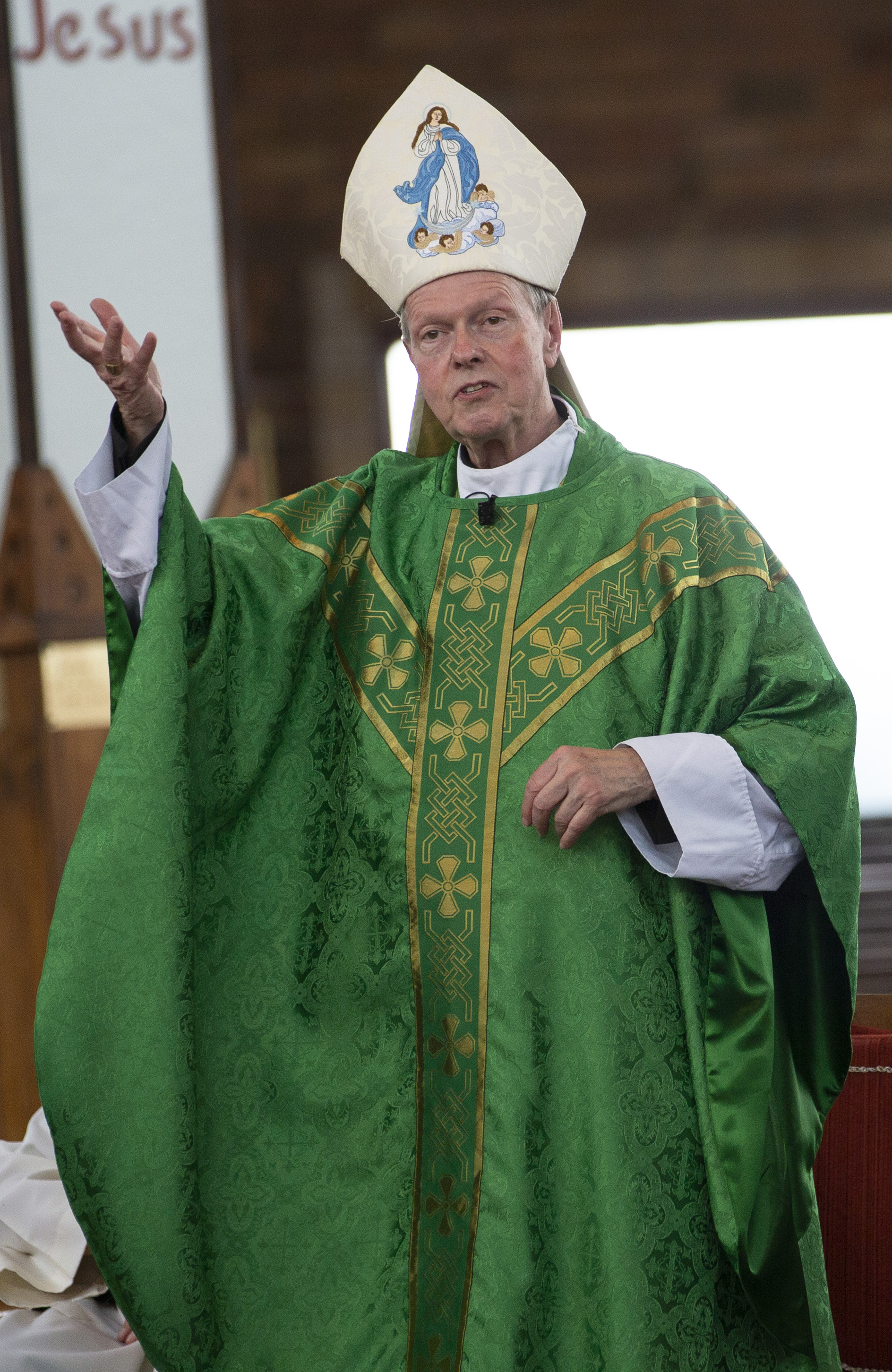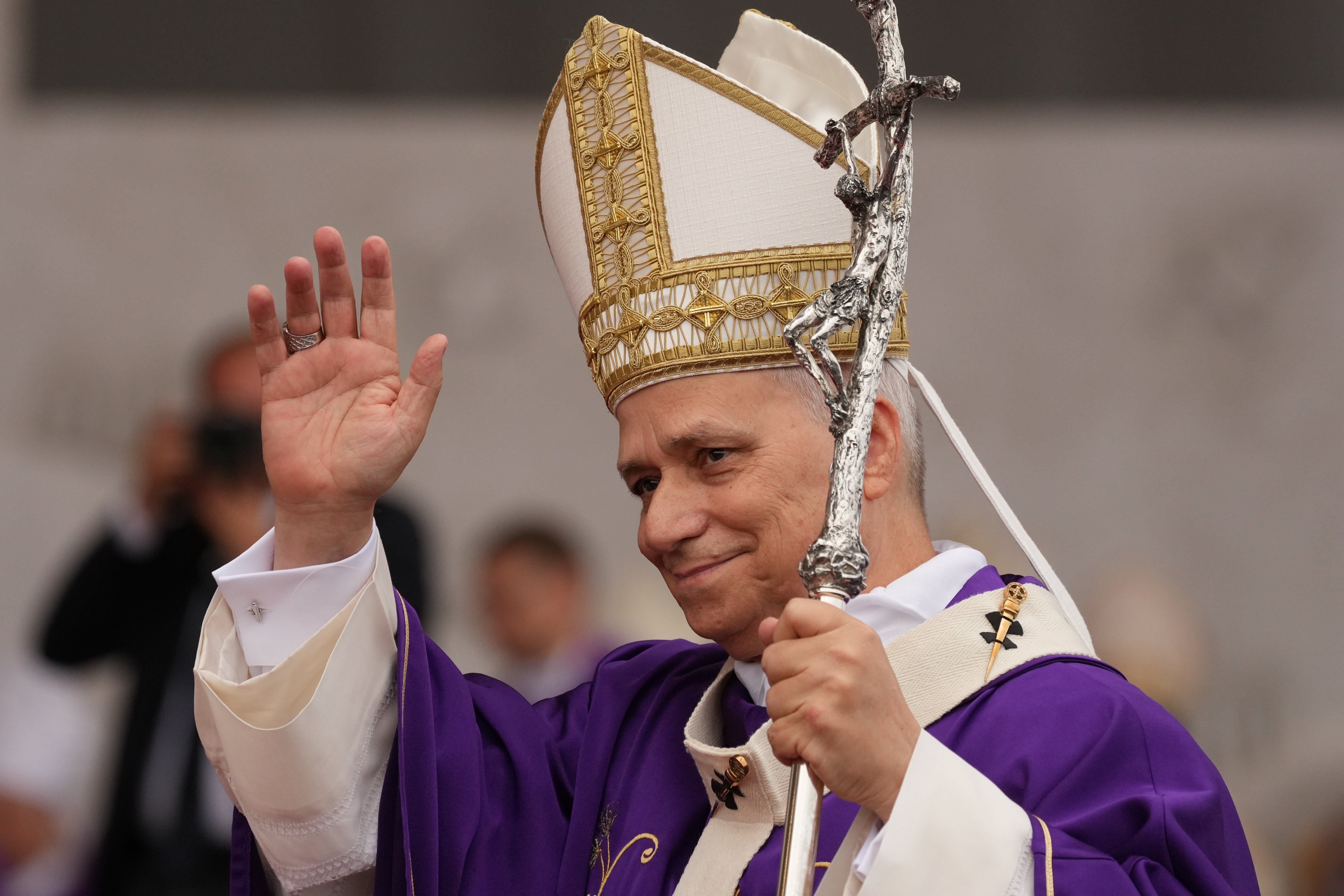July 20, 2022 at 3:11 p.m.
Karen Dutkowsky, a very dear friend of mine who accompanied malades (French, for people who are ailing) to Lourdes, would say, “In Lourdes I can only pray with my hands.” As a Dame of the Order of Malta, she was not only fulfilling her mission in that active role, but also describing how it was accomplished.
Prior to joining a Lourdes pilgrimage this July, I had only anecdotal awareness of the ministry of the Order, of which I am a chaplain, and the service of such groups as “Our Lady’s Pilgrimage,” which has been serving malades since 1993, and with whom I worked in the baths and train station. Lourdes is the site where Our Lady appeared to St. Bernadette Soubirous 18 times (February-July 1858). The apparitions have been fully affirmed by the Church (1860) as well as some 70 miraculous cures, which I believe merely tap the surface of the deep healings — spiritual, emotional and physical — which originate at this site with some regularity.
Most Catholics are somewhat familiar with the story of St. Bernadette, whose family had fallen into penury due to a perfect storm of economic collapse following the upheaval of the French Revolution. Her father, a miller, whose initial success had enabled him of generous heart to offer loans to people in need, sadly found them unable to pay him back. The institutionalization of his trade, with the advent of the Industrial Revolution, left the family in dire straits, consigned to live in a former jail, barely able to survive hand to mouth.
One Feb. 11, 1858, in an area used as a dump, St. Bernadette (14) was out with her sister and cousin gathering wood to sell for bread. She noticed light streaming from a grotto above a cave, at a water course she had just crossed. A very young Lady, dressed in white with a long blue sash and a yellow rose on each foot was holding a rosary, and signed herself with the Cross, smiling. Instinctively, Bernadette drew out her rosary, signed herself too and prayed till the end when the Lady vanished. A relationship had just begun that would resonate around the world.
The narrative that ensued is well-documented, consistent and predictable in some ways: disbelief, conflict with civil and ecclesiastical authorities, jealousy of peers and friends, largely revolving around the question: why her? As witnesses began to attest to Bernadette’s appearance and actions, a sense of something unusual grows, overtaking initial skepticism or at least worth exploring.
As often happens with miraculous events in the Scriptures — the man born blind, the conversion of St. Paul, the Resurrection itself — both subjects and witnesses are typically doubted, maligned, even persecuted. What ultimately signals their authenticity is in probing the mystery, its truth and coherence become only clearer. As it is said, you just cannot make such things up.
If there is one thing that astounded St. Bernadette, besides the stunning peace, joy and beauty that the Lady exuded, it was the way they communicated: she spoke with me as a real human being. Much like St. Juan Diego, to whom Our Lady of Guadalupe appeared (1531), Mary is present to a person who is among the poorest of the poor, uneducated, with no social standing or special character attributes apparent, at least at first. Mary’s invitation to St. Bernadette, however, brought out a response of trust and conviction that would astound her inquisitors and ultimately enhance her credibility. She would never allow them to put words in her mouth.
What she described was an image probably not different from any other Marian representation found around town. Interrogators accused her of pretending to have seen the Blessed Virgin. St. Bernadette vehemently denied this and, as matter of record, never said that she had seen Mary! What was most important to her, it seems, was the friendship she was developing, even to the point of doing things she was asked to do that appeared strange, such as eating grass (bitter herbs of the Passover?), digging for water (Moses tapping the rock?), and washing in the spring she uncovered (bathing in the pool of Siloam? The Johannine Baptism of repentance?). St. Bernadette only referred to Mary as “aquero” or “that lady,” in her particular Occitan dialect.
As an aside, “aquero” is also an archaic term for a woman without the use of her hands, or without hands. More on that later, but the layers of meaning in the words and gestures during the encounters are of biblical dimensions that could hardly have been invented in the time by the personages involved in this fast-unfolding narrative. Eventually, when pressed repeatedly for her name, Mary tells St. Bernadette, I am the Immaculate Conception. This becomes a “my Lord and my God” moment for the skeptics as the events are quickly deemed authentic and the cures and streams of pilgrims begin that have continued unabated for over a century and a half.
Most have come to Lourdes to pray for cures of all kinds, for themselves and others. Many have immersed themselves in the chill waters that those who have taken them speak of emerging warm and dry, feeling an incredible peace and restoration of body, mind and spirit in varying degrees. Miraculous cures continue to be reported.
Post-COVID, the bathing ritual has been modified into what are called “gestures,” the pouring of water three times, first over the hands of the pilgrim, then for washing the face, then for drinking. The whole experience is prayerful, quiet and quite heartwarming now, as married couples, groups of friends and entire families can now participate without the strict rules of separation into men’s and women’s baths. While some lament the loss of the more dramatic bathing ritual, many are finding an even closer connection to Mary through these gestures that St. Bernadette herself did at her invitation, taking this as an offer to them as well, to enjoy a deeper friendship with her as the Immaculate Conception, the one in whom the Holy Spirit is alive.
Like many other pilgrims, I attended the mission — very deliberately with hands and feet and aching muscles in torrid weather — to serve those who came to pray and wash. I have never seen so many wheelchairs in all shapes and sizes. The goodness of all the volunteers, many quite young, was unforgettable and overpowering. My most lasting impression, however, returns me to Karen’s experience where praying with my hands now takes on a new dimension. If Mary is indeed “aquero,” in the medical sense, she invites us all to be her hands in the world. The response is up to us but if ever there was a way to bring the Martha and Mary in us all into a peaceful harmony, it is through the gestures of Lourdes, where service and prayer become one: doing something every day for someone else fulfills our deepest humanity by sanctifying us, uniting the work of prayer with the work of care, where heaven and earth are one.
facebook.com/AlbanyBishopEd
@AlbBishopEd
- Brooklyn-based book a cry from the heart about roads not taken
- In leaving CEO post, Curtis Martin says he’ll remain on board, ‘stay on mission’ with FOCUS
- Pope thanks priests, encourages them to share responsibilities with laity
- Cardinal Pizzaballa: Gaza’s Christians long to rebuild life after 2 years of war
- New archbishop of Kraków, Poland, tells faithful that without them he ‘doesn’t make sense’
- Curia must reflect ‘new humanity,’ founded on love, solidarity, pope says
- OSV Editors: Pope Leo XIV is our Catholic of the Year
- All children kidnapped from Nigeria Catholic school will be home for Christmas
- Pray for peace in front of the Nativity scene, pope asks children
- Pope names vicar general Diocese of Austin, Texas, as bishop of Tucson, Arizona








Comments:
You must login to comment.